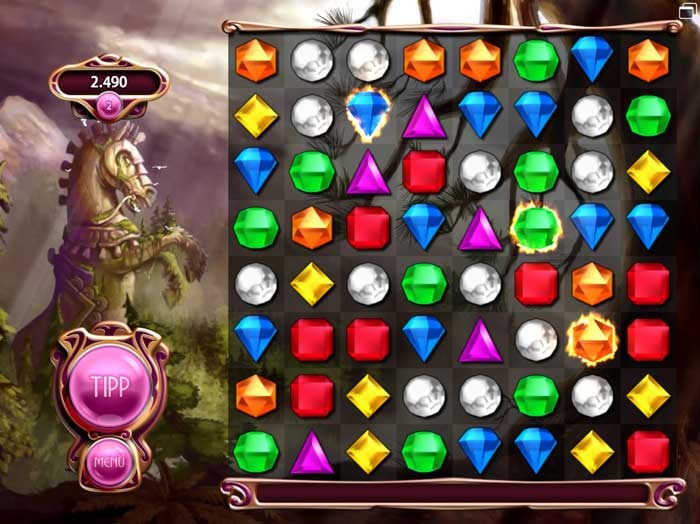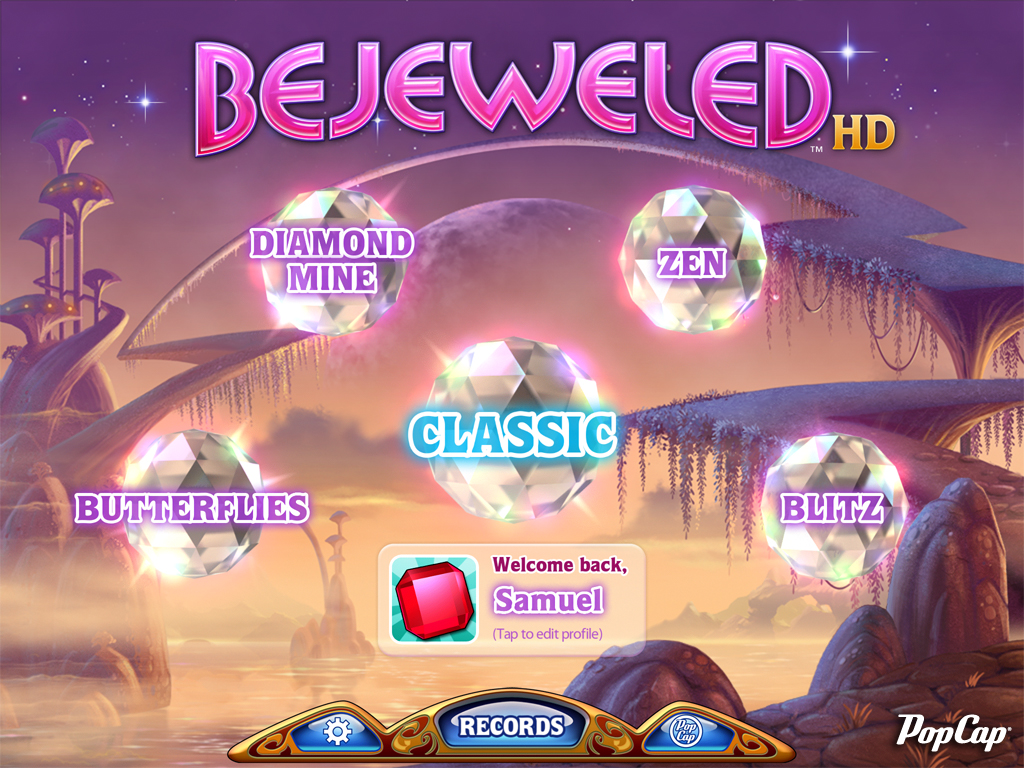

Gems were considered as well, but was rejected after not being able to find interesting variations of gemstones on the internet. Fruits were considered at one point, but was rejected since many fruits "looked too round". The team decided on what objects would be used as the playing pieces. The team decided to give the playing pieces (which were originally squares) unique looks to give them personality, and make the game accessible for colorblind people. The development team disliked the presentation (as the game was poorly coded and needed a page refresh for every move) but liked the gameplay, which led them to recreate the game with an improved presentation. Diamond Mine was mainly based on Colors Game ( Shariki), a game that involves matching three or more colored boxes, but lacked unique visuals, animation or sound. Development ĭevelopment on Bejeweled began around 2000 following Sexy Action Cool's rebranding to PopCap Games, with the team wanting to make a game that was "simple, web-based, and made in Java". If the player runs out of moves, a new game board appears instead of getting a game over. The progress bar starts halfway and retracts faster in later levels. The number of points received are slightly higher than the Normal mode.
#Popcap game bejeweled 3 trial
The Time Trial (Timed in the web version) game mode features similar rules to the Normal mode, with the only difference being that the progress bar retracts when the player is not making any moves. When no more moves are possible, the game ends. The number of points required to reach the next level increase within each level.

When filled completely, the player progresses to the next level, where the number of points earned are multiplied by x0.5 per level. Scoring points increases the progress bar on the bottom of the screen. The Normal (Simple in the web version) game mode involves attempting to score as many points as possible. The player is able to use the Hint button to find a match, but will subtract points and reduce the progress bar if used.īejeweled features two game modes, each with a different set of rules. When gems are cleared from the board, gems above the game board fall downwards, potentially causing chain reactions, which award more points to the player. Lining up more than four gems or performing multiple matches at once awards bonus points. The main objective of Bejeweled involves attempting to swap two adjacent gems of seven colors (colored red, orange, yellow, green, blue, purple and white) to create a line or row of three or more gems, which disappear once lined up. The game was followed by several sequels and spin-offs, with the game being followed by a direct sequel in 2004.

The game sold over 10 million copies and has been downloaded more than 150 million times. Originally starting out as a Java web browser game titled Diamond Mine, Bejeweled would later be developed into a retail title and was released for PCs on May 30, 2001, with the name Bejeweled Deluxe. The first game developed by PopCap under their current name, Bejeweled, involves lining up three or more multi-colored gems to clear them from the game board, with chain reactions potentially following. Bejeweled (also referred as Bejeweled Deluxe in some releases) is a tile-matching puzzle video game by PopCap Games, developed for browsers in 2001.


 0 kommentar(er)
0 kommentar(er)
